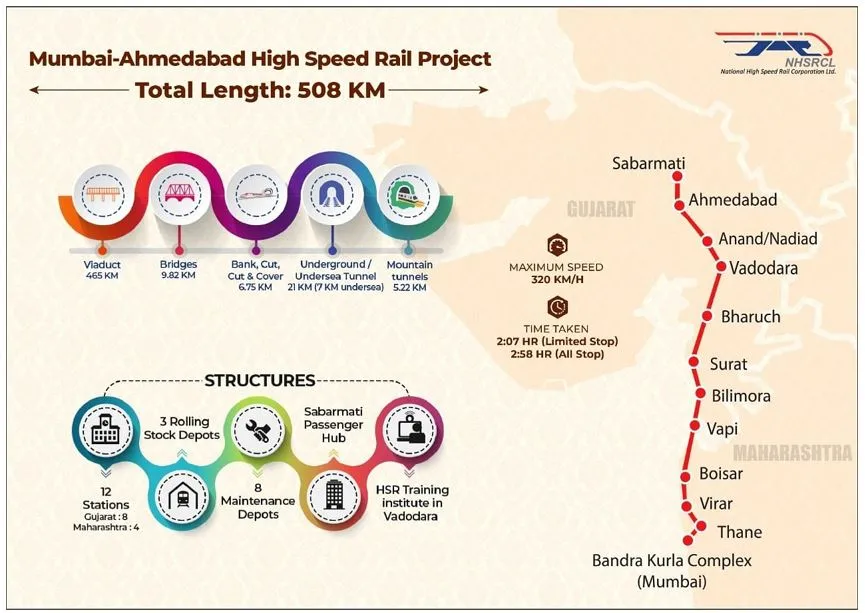

1st October 2024 (12 Topics)
Context
The Mumbai-Ahmedabad Bullet Train corridor aims to bring the efficiency and speed of Japan’s Shinkansen network to India. However, the National High Speed Rail Corporation Limited (NHSRCL) highlights unique environmental challenges that India must address, particularly extreme weather conditions in Gujarat and Maharashtra, including temperatures soaring to 50 degrees Celsius and high levels of dust and humidity.
About Shinkansen Bullet Train Technology
- Shinkansen (lit. new trunk line) is Japan’s high-speed rail. It was opened for service between Tokyo and Osaka in 1964.
- The high-speed train service is known for its cleanliness, punctuality, and safety. Shinkansen has record of zero fatal passenger accidents.
- Key-features:
- Speed: up to 320 km/h (200 mph)
- They feature highly advanced technologies such as aerodynamic design and air suspension.
- They are electric multiple-unit trains that derive their power from an overhead wire system.
- Japan has successfully exportedits “high quality” rail infrastructure to Taiwan, India, Europe and the UK in the past.
- Concern: Japan’s Shinkansen operates in a mild climate, while India’s harsher conditions pose significant risks for high-speed rail (HSR) technology.
- Taiwan is the only other nation to successfully implement Shinkansen technology, benefiting from similar weather patterns.
- This raises the question of whether India can adapt this advanced technology to its unique environment.
Fact Box: Mumbai-Ahmedabad Bullet Train Project
|
More Articles


